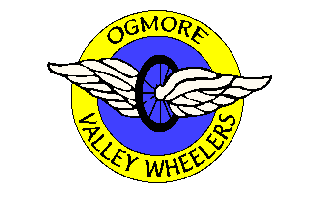MOUNTAIN BIKING
Courtesy of British Cycling website - here is a guide to mountain biking
Useful links for more details and event British Cycling - Mountain Biking
Downhill
Who is quickest top to bottom? Who brakes latest, corners fastest and rides nearest to the edge of their ability? Downhill is the ultimate test of nerve and machine control. Riders race individually against the clock pitting themselves against a challenging succession of jumps, bumps, berms (cambered corners) and drop-offs on a course which is predominantly downhill - often dropping between 300 and 600 metres in perhaps 2.5 km of racing! Races usually last between 2 and 5 minutes.
For Downhill, a full-face helmet and body armour are recommended! Bikes are highly specialised, featuring several inches of suspension front and rear. Frames are strong and light. Tyres are very broad and heavily knobbled. Transmission consists of only a single front sprocket and the chain has guides to help keep it on through the heavy knocks and vibration of competition. Brakes are very powerful discs. Weight is less of an issue than in Cross-Country and geometry is set up to provide straight line stability.

4-Cross (4X)
4-Cross pits 4 riders at a time against each other over a short, mainly downhill course: usually a mixture of natural and man made obstacles including stutter bumps, double jumps, table tops, step ups, drop offs, moguls, bermed or off camber corners and gap jumps. First over the line wins and events usually involve a series of qualifying rounds or "motos" and then semis and finals. The start is controlled by a BMX-style mechanical gate.
Clothing is robust and heavily protective, like in Downhill. As speed off the line is essential (a lot of races are won and lost by who gets into the first corner in the lead) Bikes tend to be "hardtail" (no rear suspension), which makes them more responsive to pedaling and lighter. Wheelbases are relatively short to aid manoeuvrability. Saddles are something of an afterthought as races are mostly ridden standing up.
4-Cross is the perfect stage for riders with personality and verve - you will often see top riders demonstrating their best "moves" even in the midst of a big race. Physical contact and crashes are frequent and, on well designed courses, 4-Cross is perhaps the most spectator friendly cycle racing of all. Floodlit competition brings its own atmosphere and at World level crowds can be in the tens of thousands.

Cross-Country, including Enduro & Marathon
Endurance, fitness and machine control all combine to make a top Cross-Country rider.
In Cross-Country racing, riders start together (massed start) and compete on a marked lap (typically three to six kilometres) with climbing, descending, single-track and technical sections (tight turns, narrow tracks, rocks, mud or other difficult terrain). Less experienced and older/younger riders tackle fewer laps. Elite level riders race for up to 2 and a half hours.
The "Marathon" category made its debut at the 2003 World Championships - Marathons can be 50km, 100km or even 150km in length, with longer laps and in some cases just a single loop of the full distance.
Clothing is light - not dissimilar to that worn by Road riders - with an emphasis on cooling qualities and comfort. Bikes are extremely light and often very technically advanced. There has been a move towards full suspension (suspension for both front and back wheels) in recent years, but for some courses and conditions a "hardtail" is still favoured by many competitors. Frames are light aluminium, titanium and, increasingly, carbon fibre. Tyres are light, free-rolling and generally knobbled, though a variety of tread patterns are available for different conditions. Disc brakes are now the norm.
As well as hard-core Cross-Country and Marathon racing, there has been a huge growth in Enduro racing in recent years. Enduros comes in many forms - 100km and 12 and 24 hours (often with two and four man team options) are just some of the popular options. Huge fields make a for a great atmosphere and, whilst the more able riders treat them as seriously as any other race, for many they are a chance to enjoy riding in company or have a weekend away with friends. Many riders find enduros offer the same sort of rewarding "value for money" experience as Road Sportives, with "winning" or producing a top performance less important than simply enjoying the ride and exploring your own capabilities.


